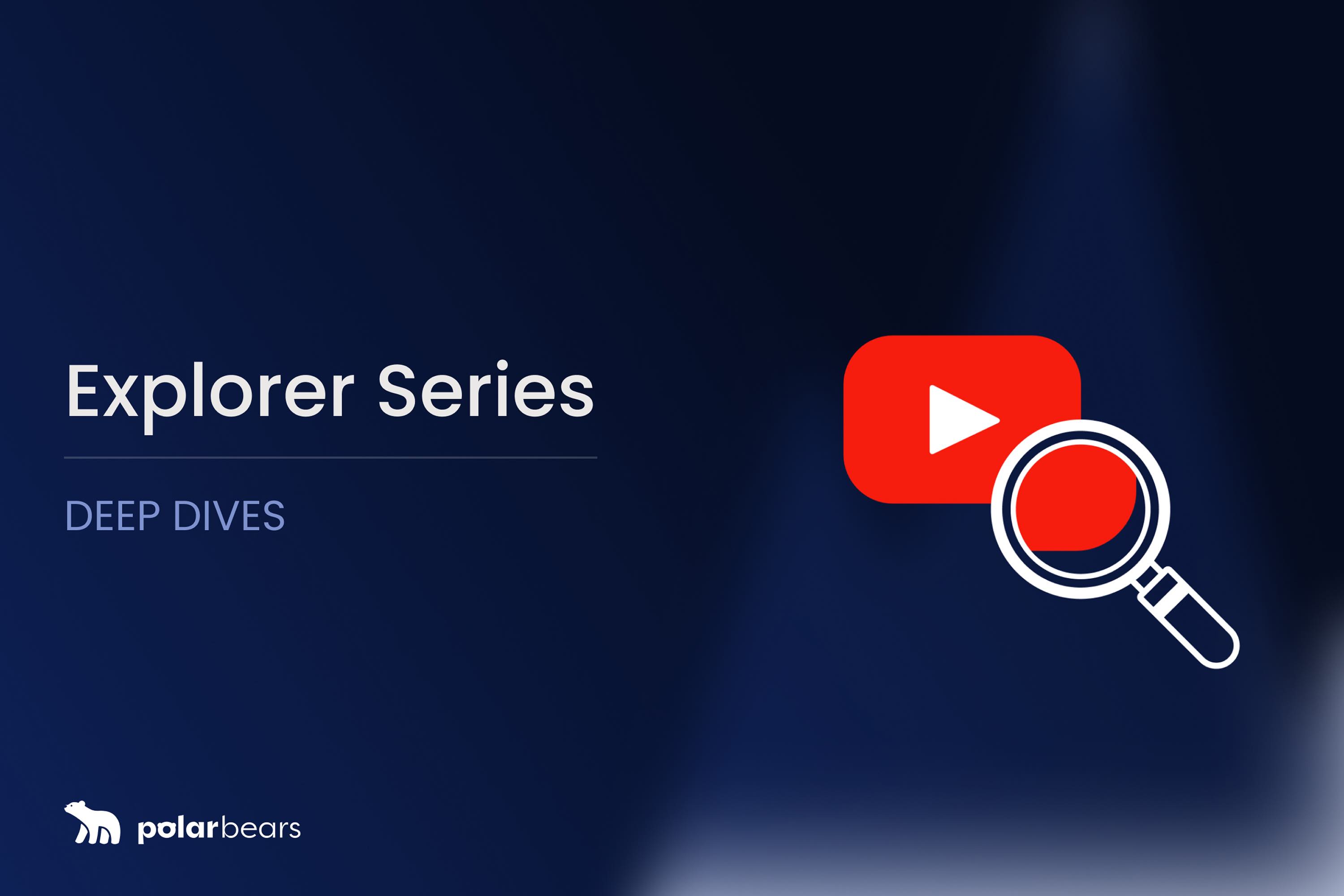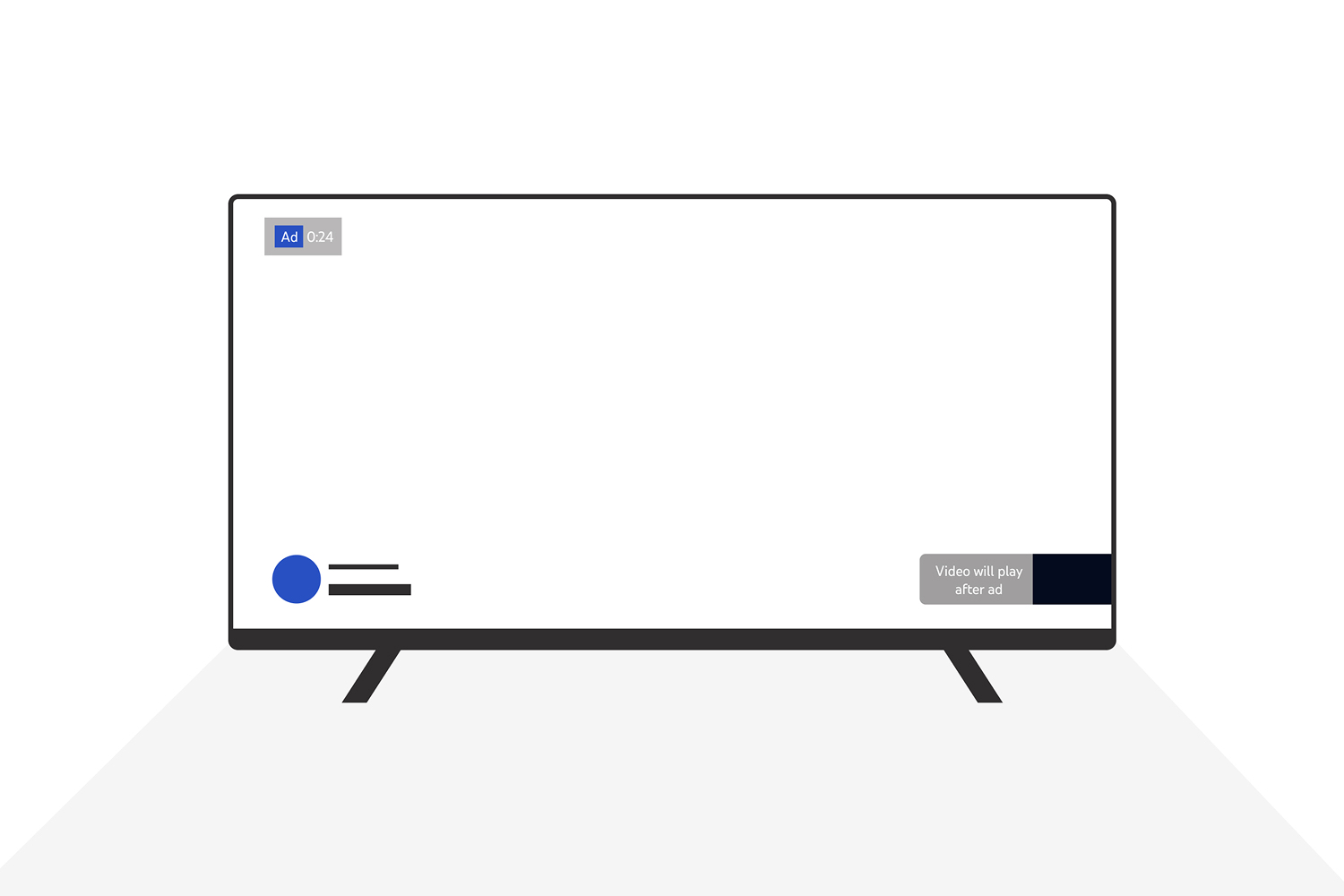The Polar Report #22

A curated view of what’s happening in the world of Digital Monetisation, Audience Development, and Measurement.
This week we look into two new YouTube features: their innovative way to stop ad blockers and a new way to discover music trends. We will also dive into the ways AI is revolutionising video content monetisation strategies and, finally, the usage of streaming services compared to linear TV.
Monetisation
YouTube Tests Countdown Timer Popup to Encourage Premium Subscriptions and Counter Adblock Usage
In its pursuit of pushing users towards its paid Premium subscription, YouTube has introduced a new anti-adblocker popup variant that features a countdown timer in the upper right corner.
This timer provides a visual cue, indicating the time left before an ad commences and targets non-Premium viewers who use ad blockers.
The popup box retains its core content, highlighting the advantages of YouTube Premium and offering the options to "Allow YouTube Ads" or "Try YouTube Premium."
Initial reports suggest the countdown timer lasts for about 30 to 60 seconds.
This strategy follows YouTube's earlier move to restrict ad blocker users to viewing only three YouTube videos, after which they are prompted to either view ads or consider subscribing to YouTube Premium.
YouTube's Aggressive Tactics and Their Impact
As YouTube persists in its efforts to promote Premium subscriptions, it has introduced tactics such as:
Higher video quality for subscribers (now extended to desktop usage).
Aggressive anti-adblocker popups to encourage Premium sign-ups.
Despite criticism for its aggressive approach, YouTube continues to employ strategies like the countdown timer to incentivise non-paying users to shift towards paid subscriptions, even as concerns over rising subscription costs persist.
Changing Viewer Interaction & Advertising Strategies
Ad blockers are changing viewer interaction, with many users actively avoiding ads by leaving the room or skipping channels. This highlights the need for advertisers to adapt their strategies to engage audiences effectively without being intrusive.
With the rise of subscription fatigue and increasing costs, viewers are now forced to weigh the value of content against the inconvenience of ads.
This shift requires creative advertising strategies to maintain user engagement without sacrificing monetisation.
Will these aggressive tactics push viewers to subscribe to YouTube Premium despite the price increases, or will they be deterred?
📖 Full article on Neowin
AI Revolutionises Video Content Monetisation Strategies
The integration of artificial intelligence (AI) with video content has brought about transformative opportunities for content creators and marketers across platforms such as Instagram, Pinterest, and YouTube.
AI's impact spans different dimensions, from enhancing the quality of video content to offering innovative methods of monetisation.
AI's Role in Content Creation & Monetisation
AI-Enhanced Video Editing Tools
Enables creators to produce high-quality videos by seamlessly analysing, editing, and refining visual elements.
Crucial for platforms like Instagram and TikTok, where short-form videos must quickly capture viewers' attention.
AI-Driven Algorithms for Content Discovery
Improves discoverability and engagement.
Optimised content gets increased visibility, leading to higher engagement rates and more significant revenue opportunities.
AI & E-Commerce Integration
Platforms like Instagram and Pinterest now leverage AI to embed product tags into video content, enhancing e-commerce opportunities.
AI-driven automated content generation enables creators to maintain a consistent content flow efficiently.
Ethical Considerations in AI Content Creation
While AI presents vast opportunities, it is crucial to navigate ethical concerns responsibly.
Creators embracing AI's potential are best positioned to thrive in the evolving landscape of digital content monetisation.
The fusion of AI and video content signals a transformative shift in revenue generation and audience engagement. From personalised recommendations to immersive experiences, AI paves the way for a dynamic digital landscape.
📖 Full article on Medium
Audience Development
YouTube Music Introduces 'Samples': Innovative Way to Discover Music Trends
YouTube Music is positioning itself as a pioneering app in music discovery as social media platforms surpass radio as the preferred method for discovering new tracks.
To enhance its music discovery interface, YouTube Music has introduced a new feature called "Samples".
What Is 'Samples' & How Does It Work?
- Users can preview trending tunes and artists through brief snippets of music.
- These short-form videos are presented in a feed, showcasing popular tracks aligned with users' listening habits.
- Users can save songs, share them, or watch the full video as part of their streaming experience.
- Unlike TikTok, which hosts diverse content types, Samples is exclusively music-focused.
Why This Matters for the Music Industry?
- This move aligns with the trend of leveraging short videos for music discovery.
- Many artists and record labels are now creating music designed to fit the concise nature of short videos.
- Given YouTube's existing Shorts feature, this seamless integration within YouTube Music caters to evolving user preferences.
- YouTube Music's 'Samples' feature aims to provide an immersive and engaging music exploration experience, bridging music and short video trends.
📖 Full article on Digital Information World
Measurement
Streaming Surges Ahead: Traditional Linear TV Usage Dips Below 50% in the US
Traditional linear TV viewership in the US has slipped below 50% of total TV usage, marking a significant shift in media consumption.
According to Nielsen's latest report:
- Linear TV (broadcast & cable) now accounts for less than half of TV consumption.
- Streaming has reached an all-time high, comprising 38.7% of total TV usage.
- Streaming's Rapid Growth Compared to Linear TV
- Streaming viewership has surged by 25.3% in just one year (compared to July 2022).
- Streaming's share in the broader TV landscape has increased by 7.3%.
- This milestone follows the moment streaming outpaced cable in 2022.
YouTube Leads the Streaming Charge
YouTube now claims 9.2% of all TV screen usage, inching closer to capturing 10% of total TV screen time.
Netflix follows closely at 8.5%, leading among subscription video-on-demand (SVoD) platforms.
Hulu holds 3.6% of screen time, contributing to streaming’s dominance.
Together, YouTube, Netflix, and Hulu command over 55% of all streaming time, with YouTube alone representing 23% of total streaming time.
Implications for Content Creators & Advertisers
This paradigm shift in media consumption carries major implications for content creators, advertisers, and the broader entertainment industry.
The growing dominance of on-demand content means advertisers and creators must adapt their strategies to capture audiences embracing this digital shift.
📖 Full article on VideoWeek
If you liked that why not take a look
Ready to maximise your YouTube revenue?
Get in touch and let’s begin exploring your channel’s hidden potential.










